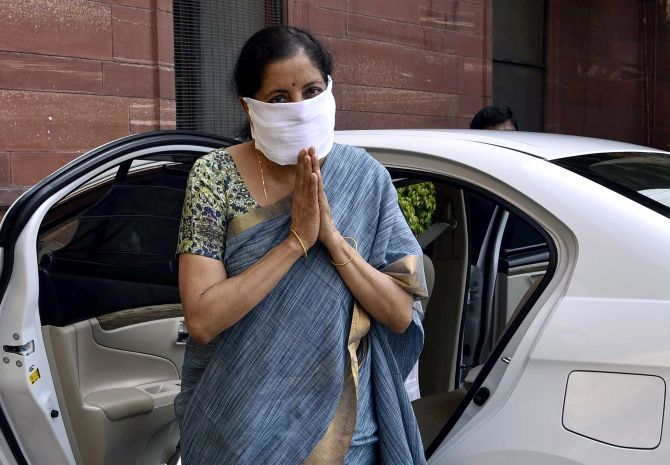There could be multiple measures announced in quick succession, not only by the finance minister but also other ministers regarding their respective sectors, and by the Reserve Bank of India. The total size of these announcements could rival that of other G-20 nations as a percentage of GDP.

Finance Minister Nirmala Sitharaman could later this week announce a bigger stimulus package than the Rs 1.7-trillion one she had declared in late March. The possible quantum of her next set of announcements could total Rs 3 trillion or more, Business Standard has learnt.
And it won’t be the only one. There could be multiple measures announced in quick succession, not only by the finance minister but also other ministers regarding their respective sectors, and by the Reserve Bank of India.
The total size of these announcements could rival that of other G-20 nations as a percentage of GDP. This is a departure from the Centre’s earlier thinking that it will not announce a massive package in spite of industry bodies and stakeholders wanting it to do so.
Senior government officials said this change in thinking was because of three factors.
First, the increase in borrowing programme for FY21 to Rs 12 trillion, from Rs 7.8 trillion, has given the government more room to spend.
Second, the Centre has a better idea how deep the economic slump is and will be.
And third, with the economy gradually being opened up, industries, especially small businesses, will need all the support they can get.
“In terms of the health and economic impact, when the lockdown was announced we knew it would not be a short sprint. What we did not know was whether this was a marathon or a middle distance race. Now we have a better idea. We know that in terms of cases and deaths we won’t be as bad as Italy or the US,” said an official, who is part of the deliberations on a stimulus package.
“The next set of announcements will definitely be massive compared to the previous ones,” the person said.
The next set of announcements is expected to include a credit guarantee scheme for working capital loans of micro, small, and medium enterprises (MSMEs). In light of migrant workers fleeing cities in thousands, the Centre could provide incentives to companies to maintain their workforce.
For the masses, an expansion of schemes through direct benefit transfer is expected. There is a proposal for another hike in NREGA payments, and disbursals under the PM-KISAN scheme could be further expedited. The earlier cash transfers announced by Sitharaman in late-March could also be increased.
The Centre and state governments are gradually lifting the lockdown and allowing economic activity, especially in green and orange zones.
Train services are resuming from Tuesday and flights are also expected to be operated soon. As workplaces are opened up again, officials say the focus will be on sectors that have been affected the most by the pandemic and the extended lockdown. These include services, aviation, tourism, hospitality, and auto industry.
After the finance minister, the respective ministries could come up with further measures.
So far, apart from the finance minister’s March 26 package, the RBI has made a number of announcements, including for mutual funds and NBFCs. It lowered interest rates, opened a refinance window, and other measures to unclog credit flow.
The FM’s first package was around 0.8 per cent of the GDP, much smaller compared to most other G-20 nations. The United States’ stimulus package was pegged at 11 per cent of GDP, while that of Australia was at 9.7 per cent, Brazil was at 3.5 per cent, according to data portal Statista.
Indian industries bodies Assocham and FICCI have been asking for big-bang packages, ranging from Rs 9 trillion to Rs 23 trillion.
FICCI President Sangita Reddy wrote to the finance minister on Monday, seeking a significant stimulus of Rs 9-10 trillion (4-5 per cent of GDP).
“This money will be injected for relief and rehabilitation across all levels of the economy,” said FICCI in a statement.












 © 2025
© 2025